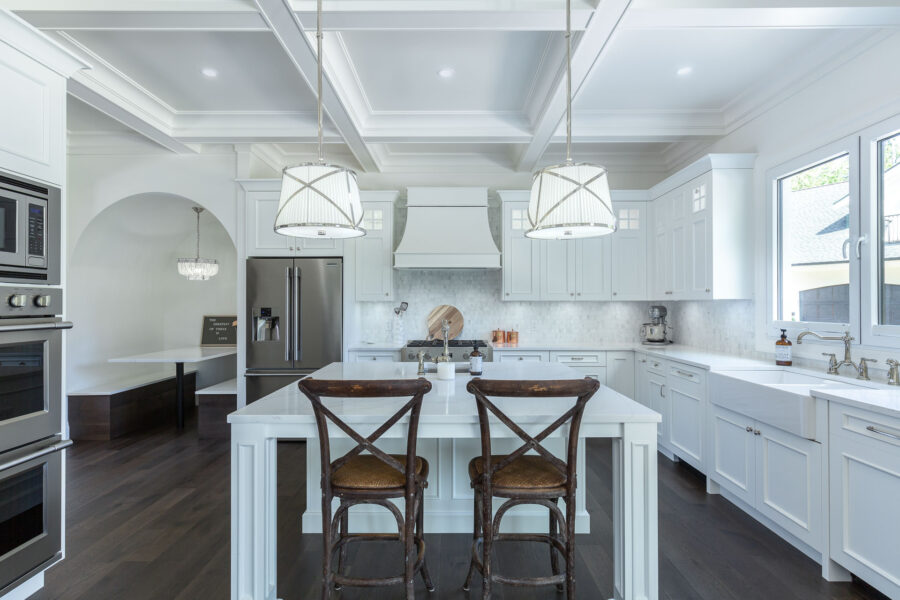The one thing interior designers and trend makers alike often overlook are changes to the structural makeup of our most heavily occupied room in the home. The physical makeup of kitchen cabinetry is changing just as quickly as the latest kitchen trends, and one we’ve noticed lately is the absence of many overhead cabinetry solutions.
In this piece, we’re looking at the pros and cons of overhead and floor-level kitchen cabinets and trying to figure out why the industry is moving away from overheads.
Overhead Cabinets

Pros
Overhead cabinets are a fantastic way to add a huge amount of storage to a cramped kitchen. Typically, overhead cabinets are used as storage for plates, glassware, coffee mugs, and even pantries for dry goods like coffee, tea, honey, spices, sugar, and even olive oils, butter, bread, and as makeshift medicine cabinets.
Further, they’re staples of the kitchen aesthetic. We almost expect to see them when we walk into a kitchen. They appear to be part and parcel to the kitchen landscape. When carefully installed, they don’t get in the way of your sightlines into the living room or dining room and can help add perceived space to a cramped room if they follow the colour palette of the room and blend into their surroundings.
Cons
Installation for overhead cabinets is certainly a bother. Overheads require sturdy and durable full-height back panels made of solid wood or furniture-grade plywood – which can drive up costs; further, the simple presence of overhead cabinets’ means an increased cabinetry budget.
Overhead cabinets can also be tough to reach and use, depending on your height, age, or physical ability. They can also be tough to clean as a result, and a cabinet is only as useful as it is accessible.
Floor Level Cabinets
Pros
Floor level cabinets are increasing in popularity thanks to an ever-expanding obsession with kitchen islands and peninsulas as a mainstay of the modern kitchen aesthetic. Floor level cabinets make up the foundation of kitchen islands and mobile culinary workspaces, so they lend well to making a kitchen into a more functional, conservation/entertaining based space.
Floor level cabinets are also popular as part of the move away from overhead cabinets. Without mixing words, if you don’t have one, you MUST have the other. Increased floor level cabinetry is a trend we anticipate continuing into the future as homeowners decide to open up their spaces and do away with old school overhead cabinets.
Floor level cabinets are also very accessible and offer organization and storage bins and drawers that aren’t typically accommodated by overhead configurations.
Cons
Floor level cabinets can be too accessible for some… Kids and toddlers can easily get into floor level cabinets, so if you have an issue with them playing the drums with your pots and pans, maybe consider child locks on the inside of your base level cabinets or investing in overheads.
Floor level cabinets also take up a huge amount of space in awkward or cramped kitchen spaces, so they’re typically only useful in larger, more open concept spaces. They can also cut off foot traffic and create jams of people in small corners of the room if they’re oversized, or installed in funny locations. Further, if you happen to have back problems, bending over all day long could eventually take its toll on your body.
We’ve always liked a series of overhead cabinets, as they’ve offered homeowners a classic aesthetic and ample storage space. In a new school space that features no overhead cabinets, we can certainly understand the stylish reasons why some of you have opted to do without them — the minimalist aesthetic is a powerful and popular style trend this year.
Yet, we still value the timelessness and adaptability of an overhead cabinet, and can’t say enough about its storage potential, it’s inaccessibility to children and classic style. What do you think?